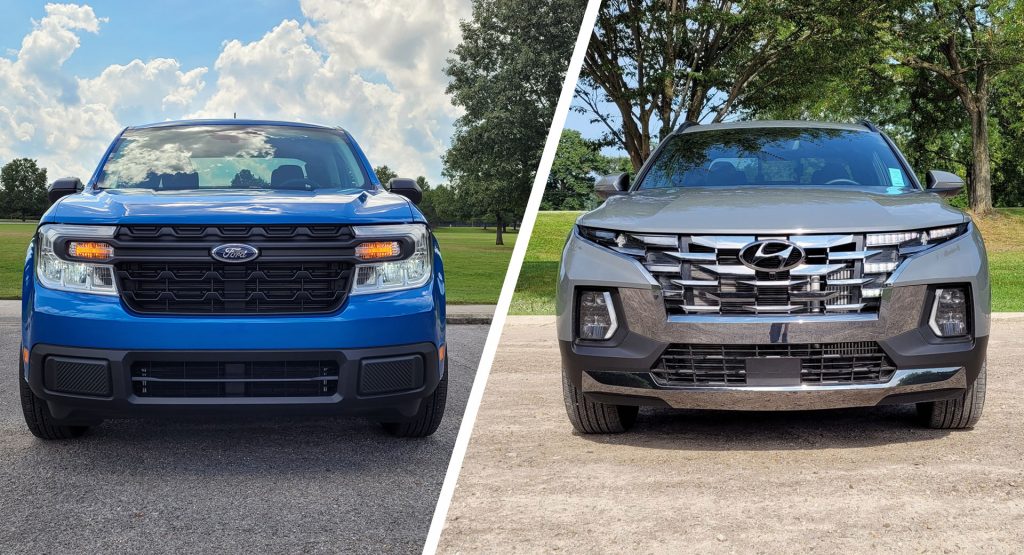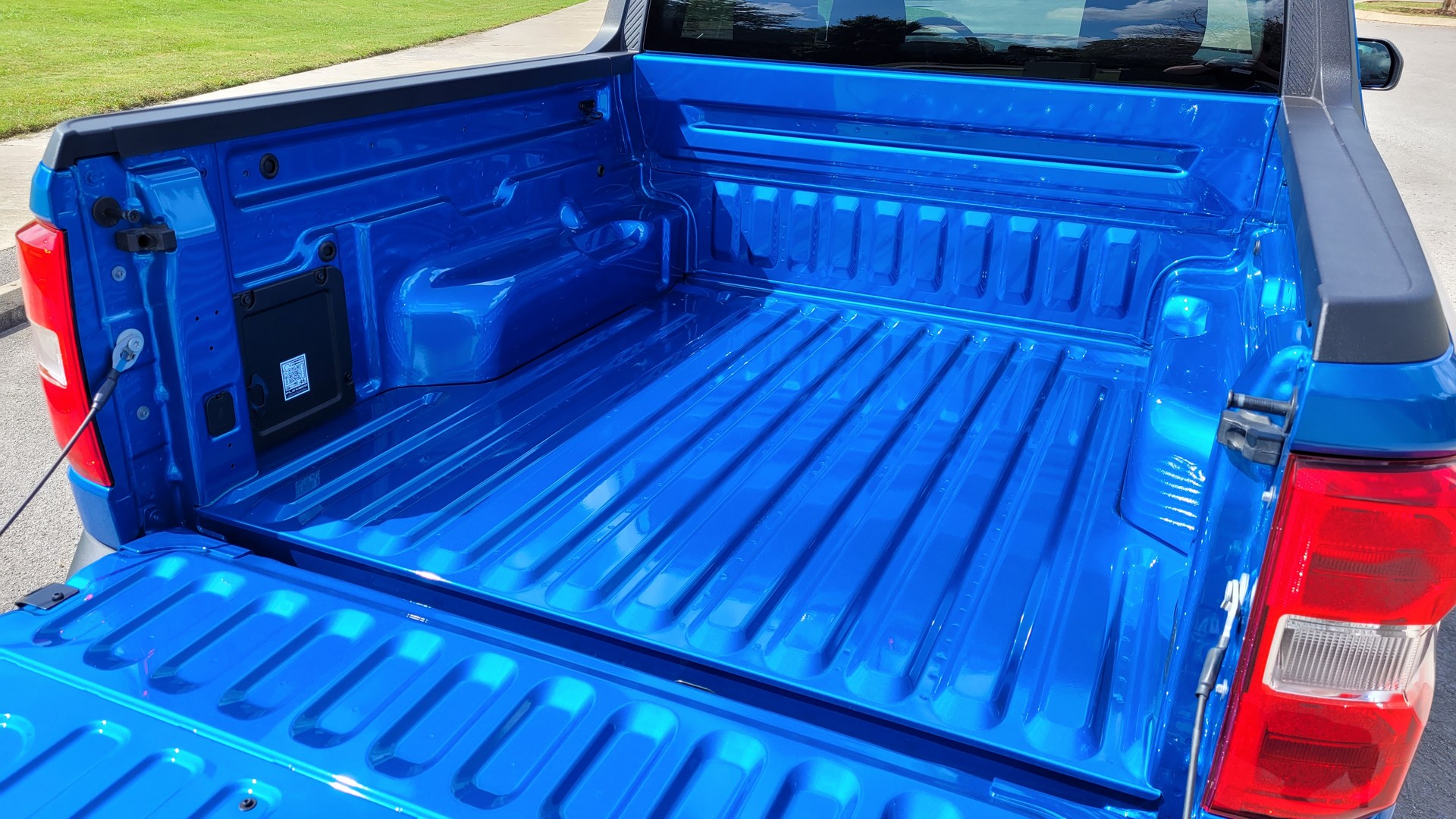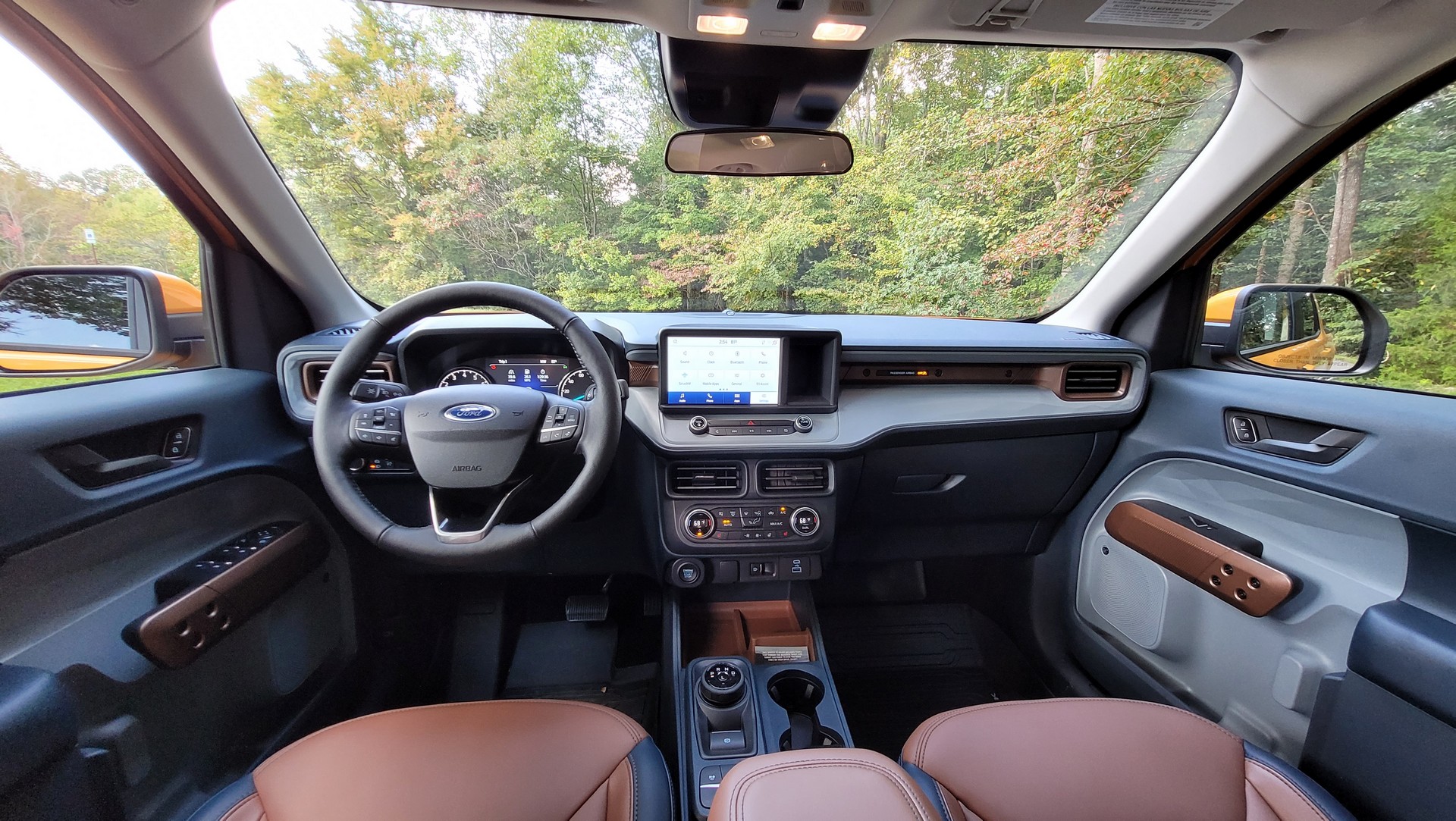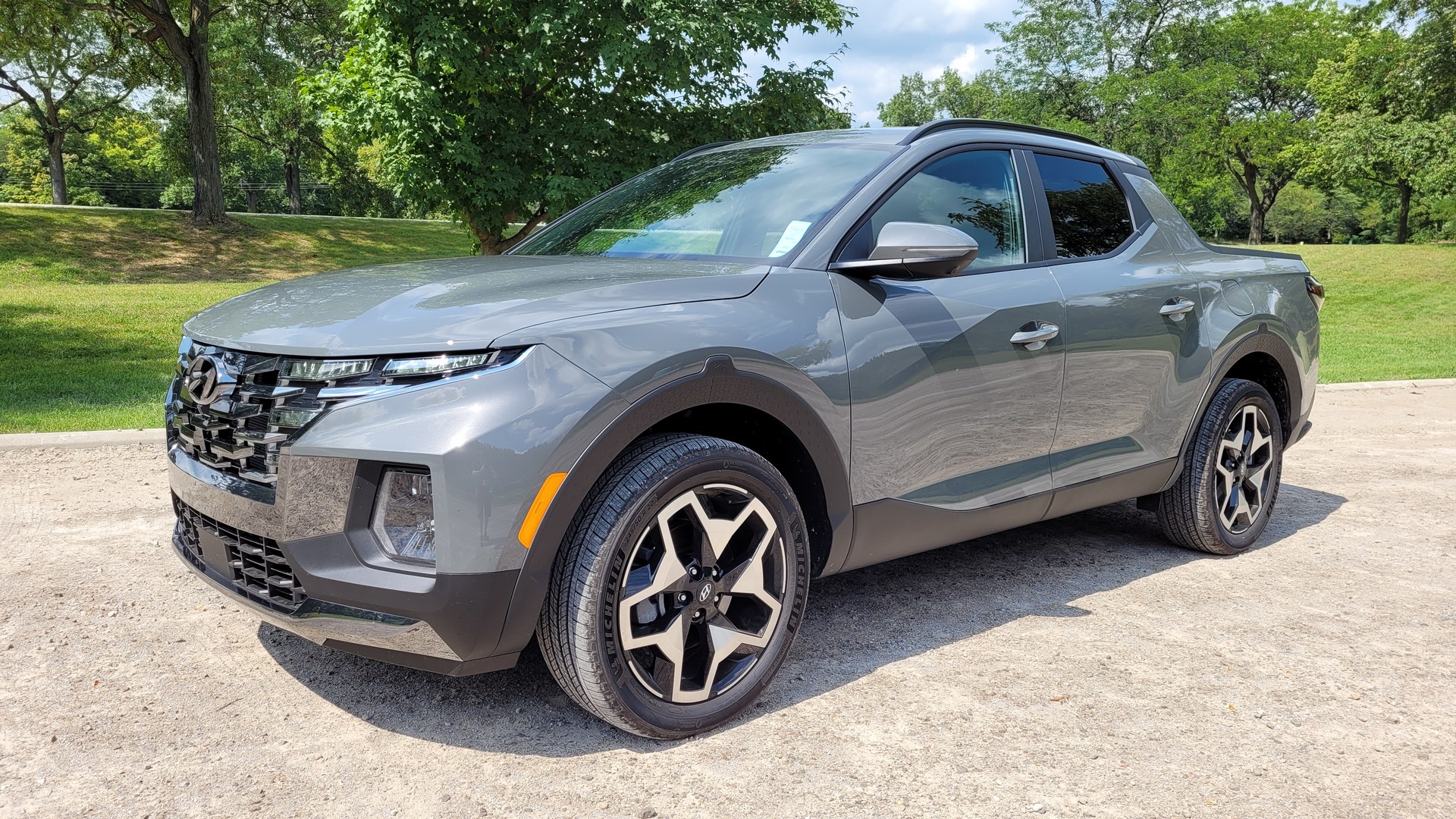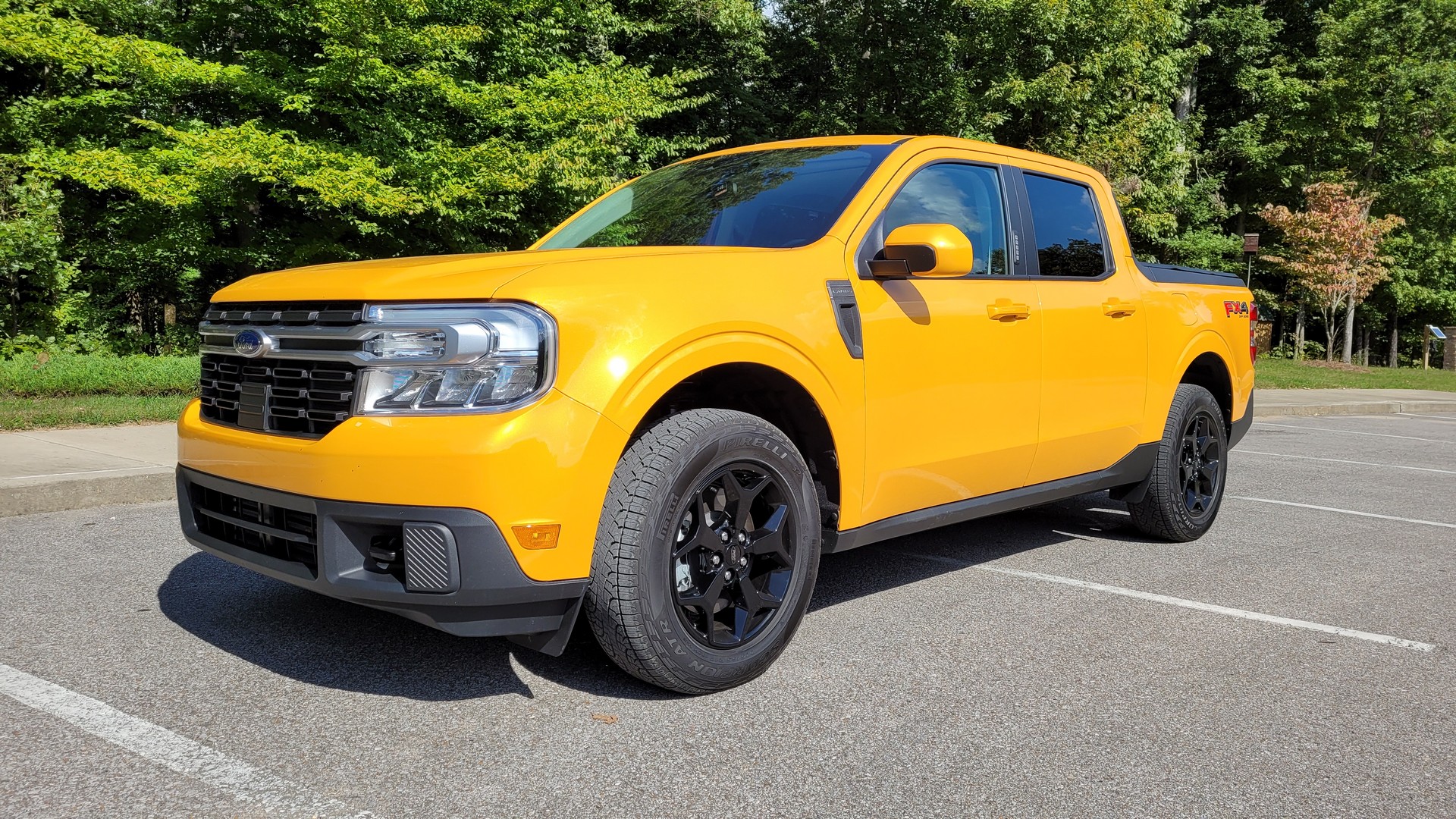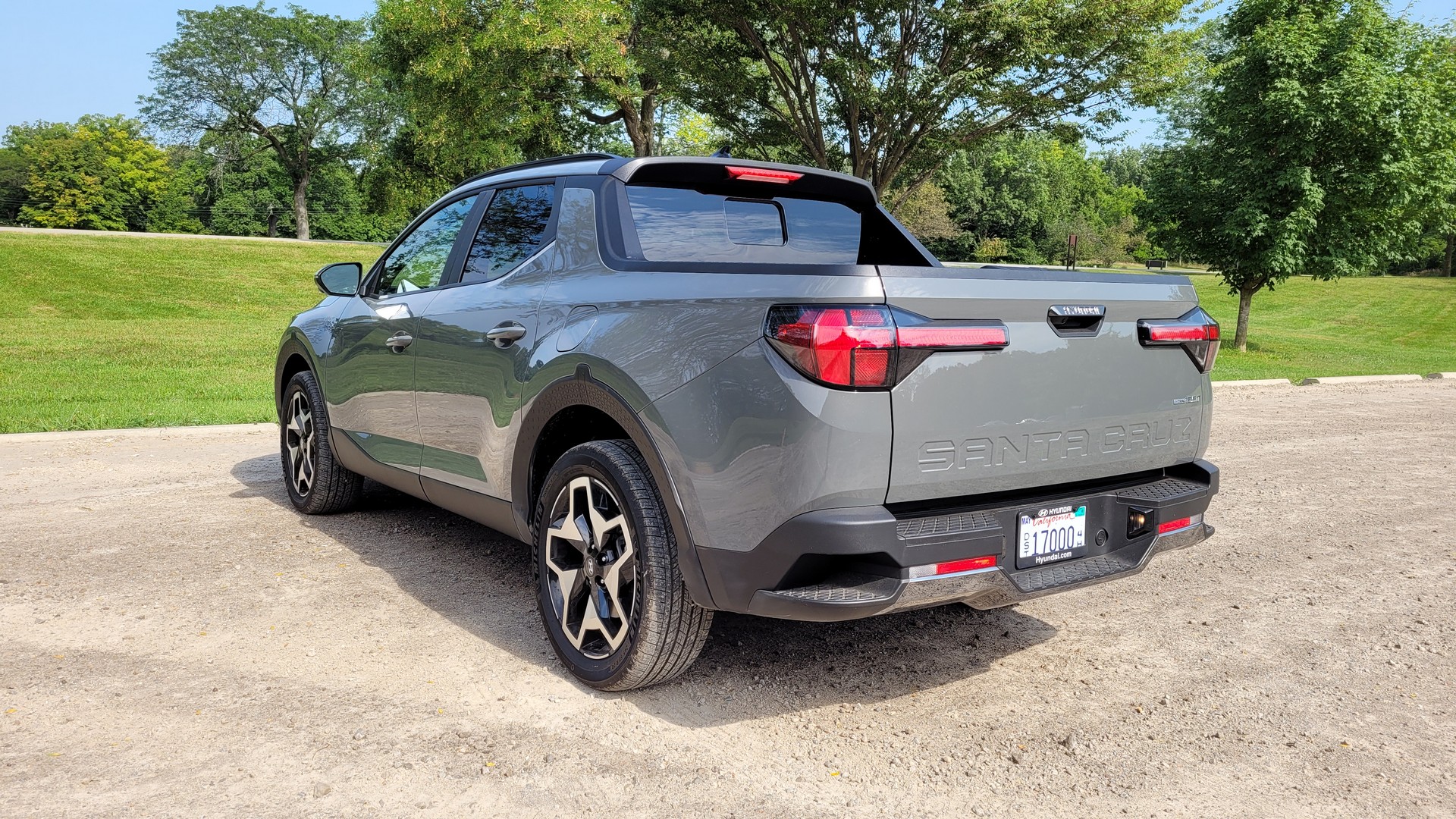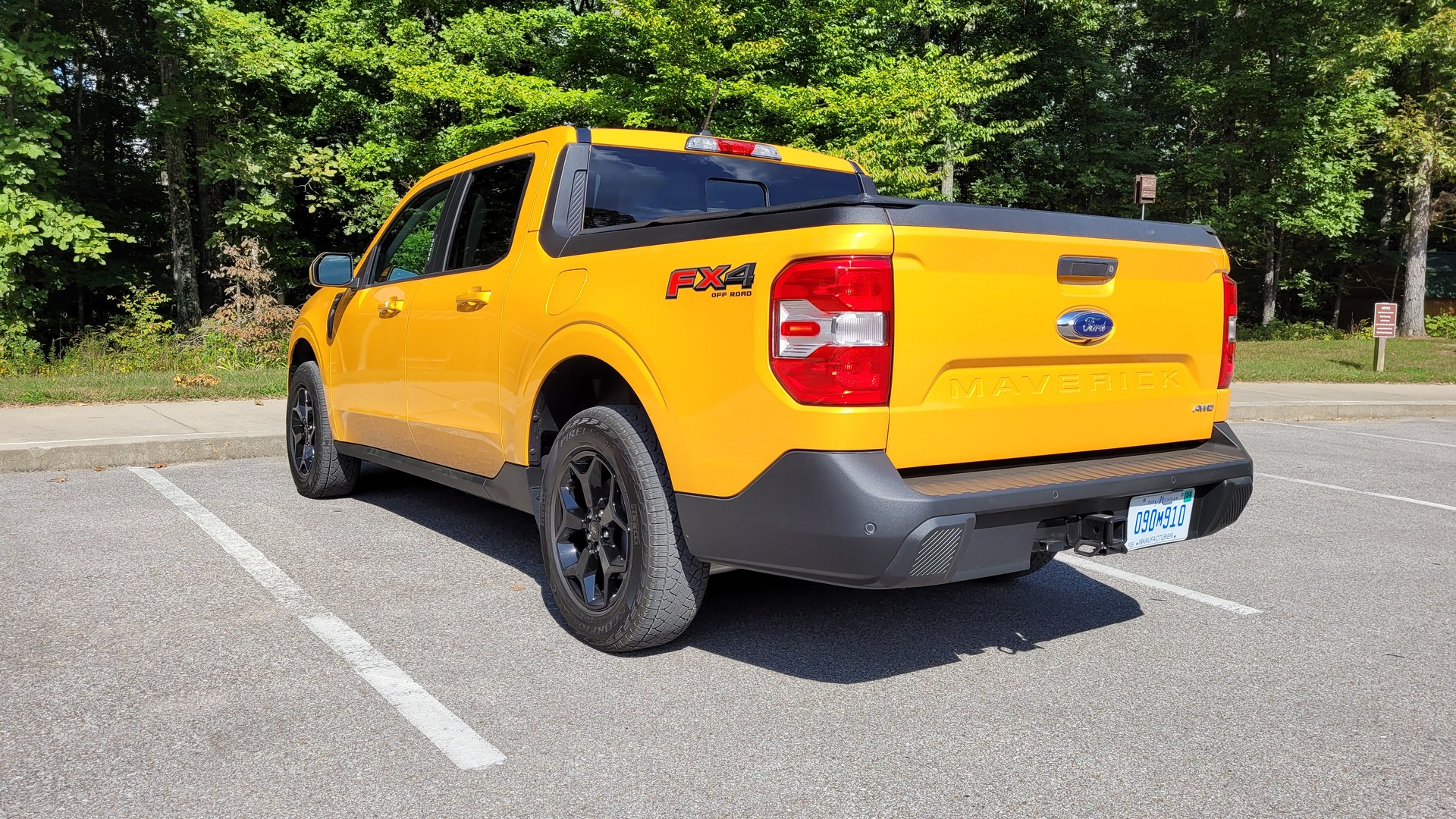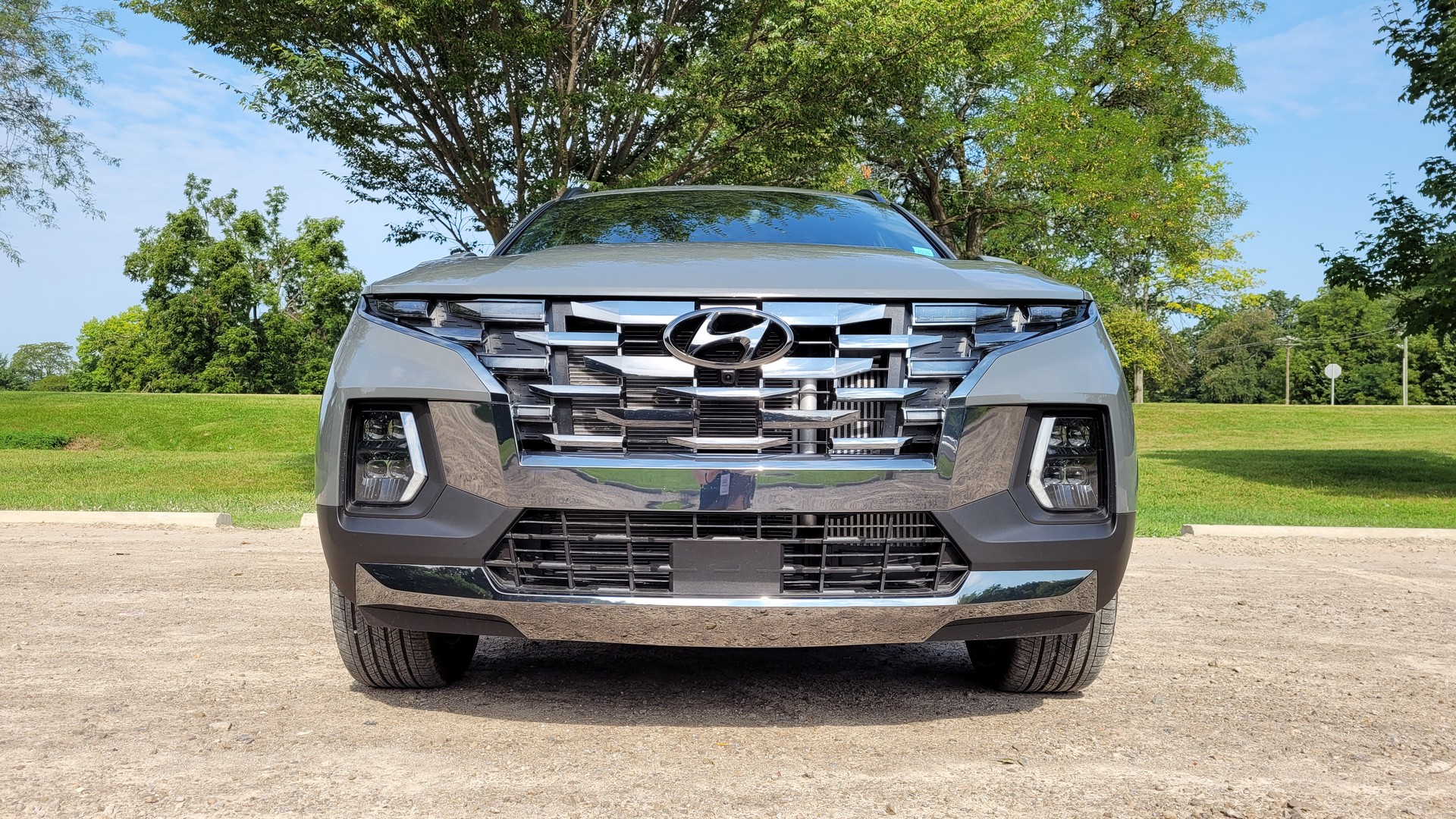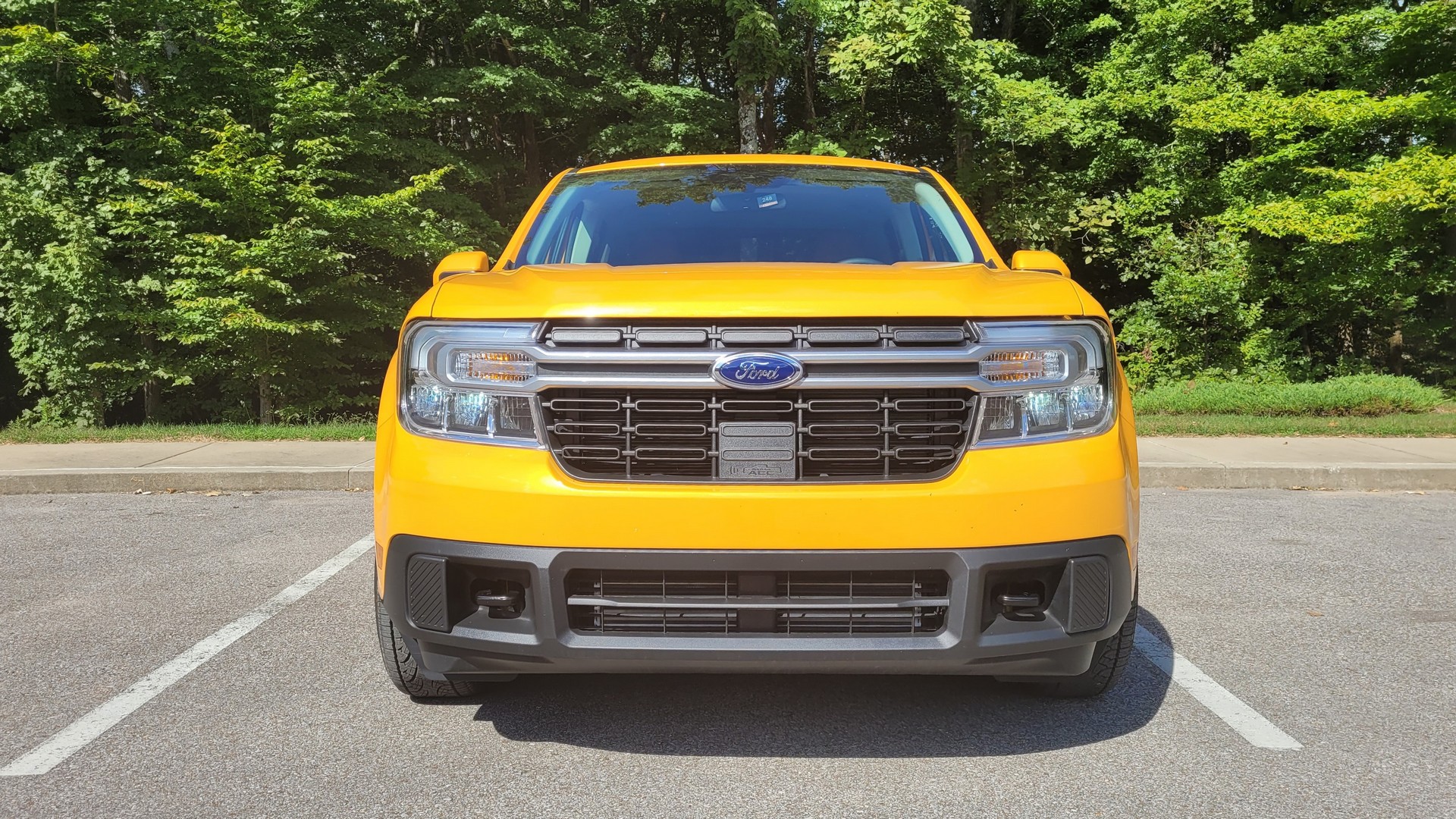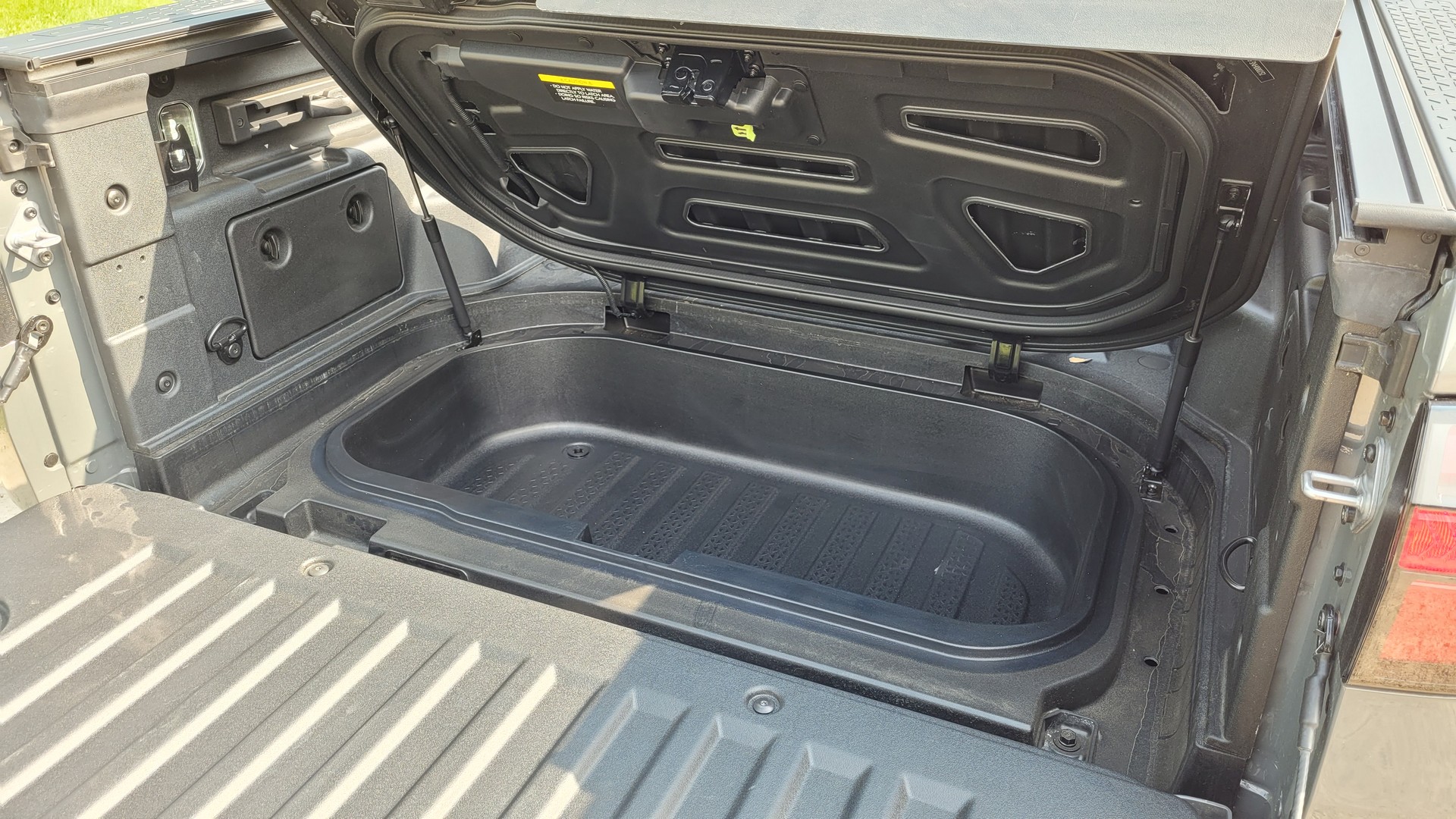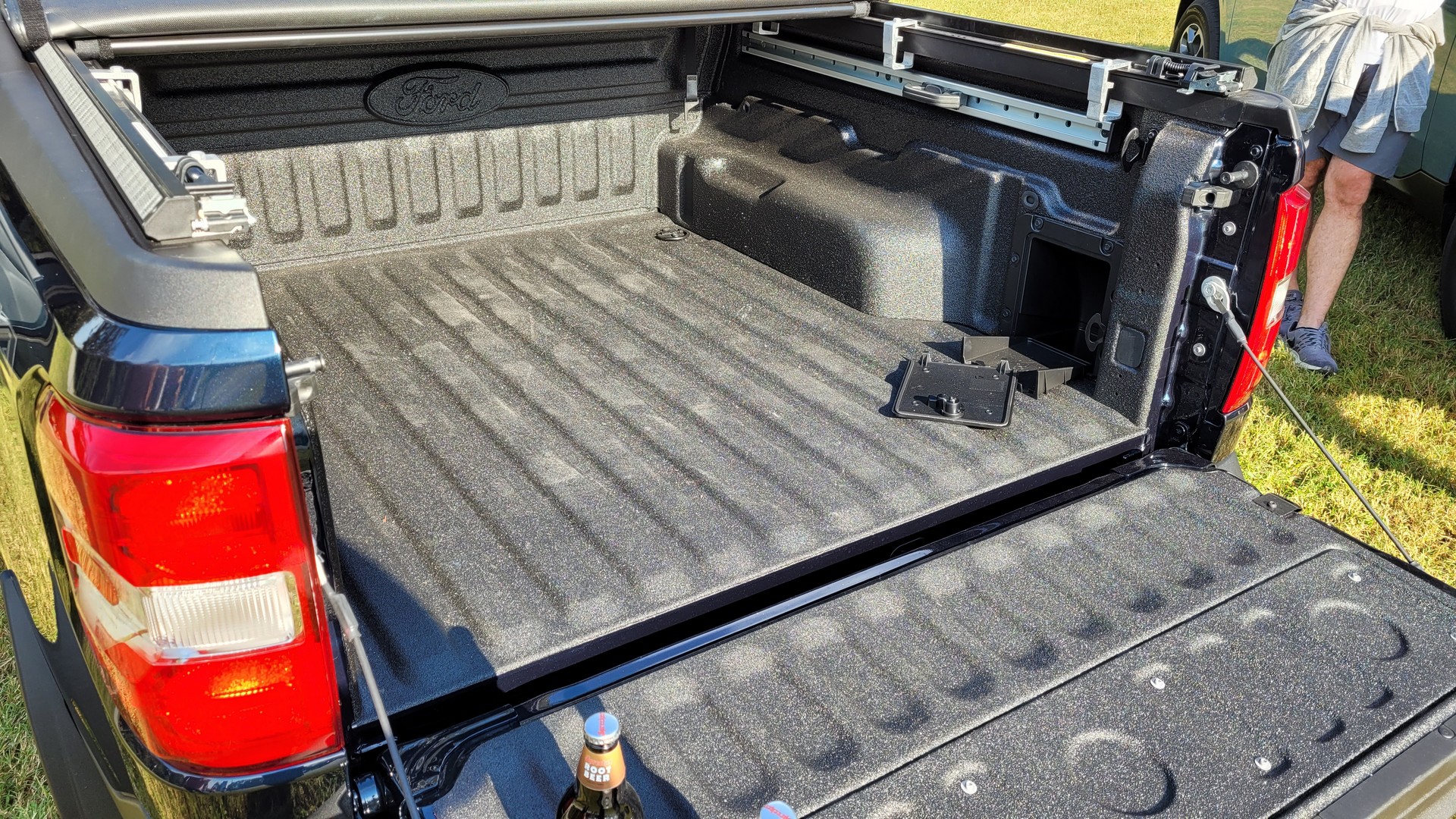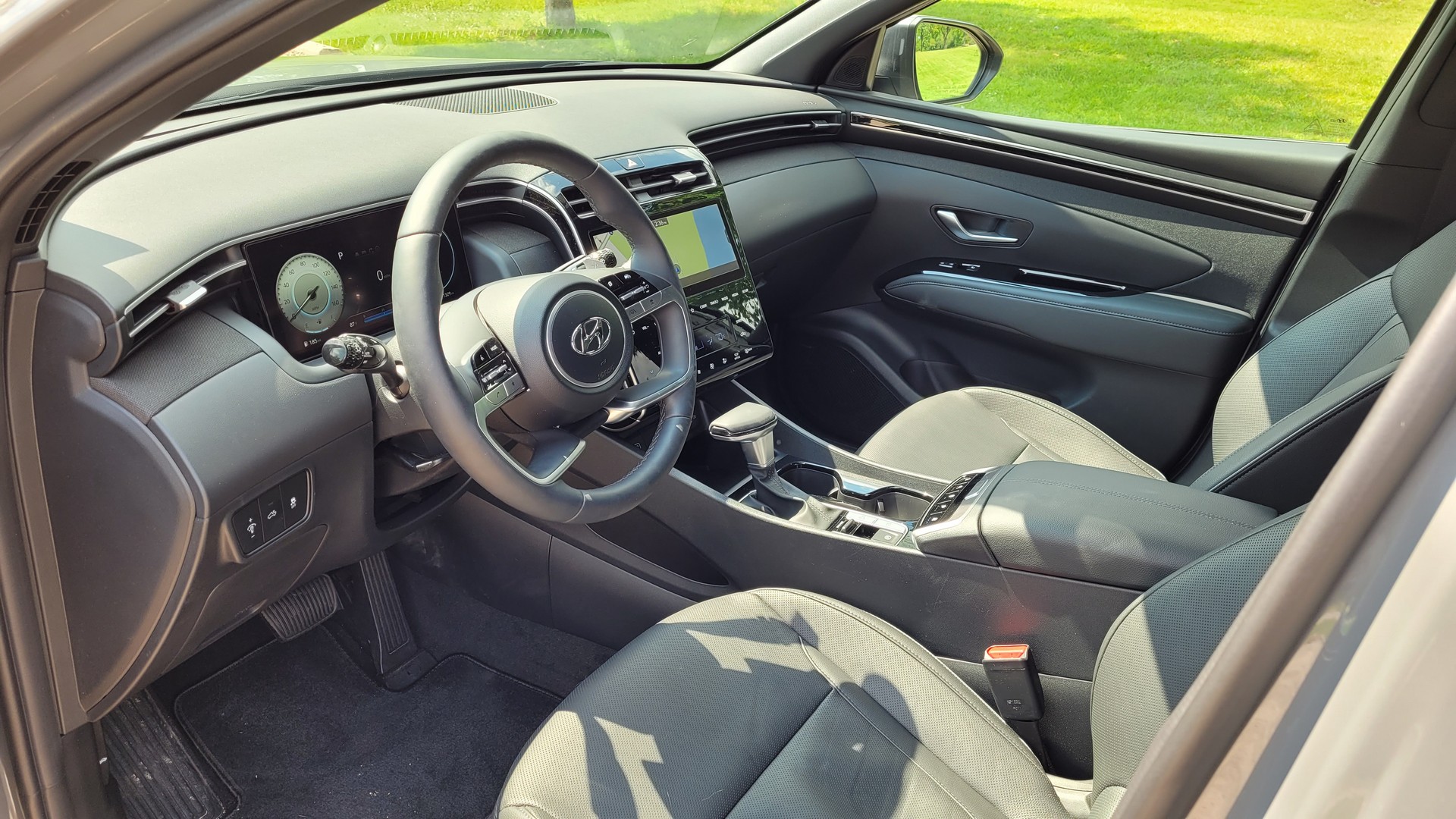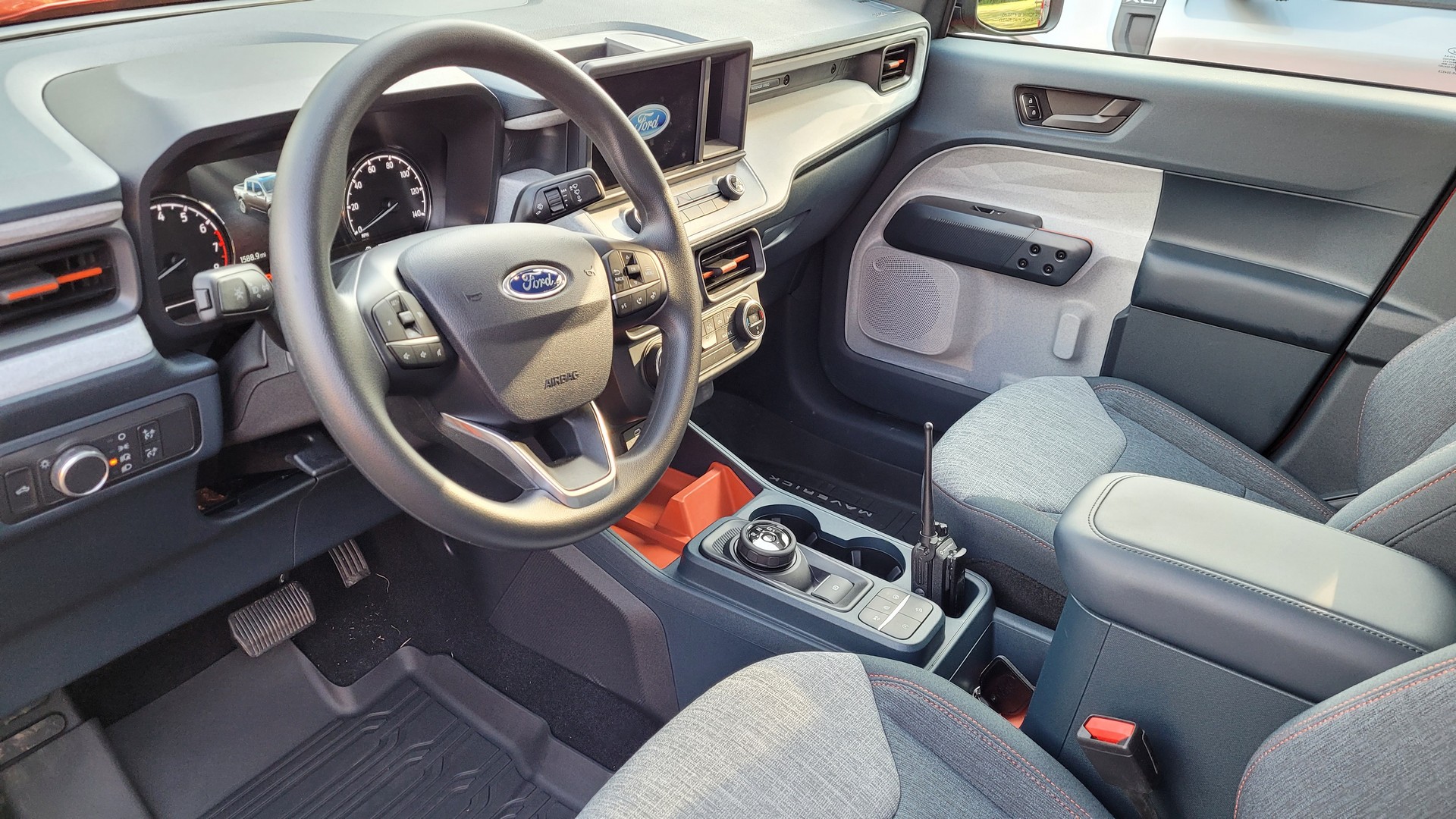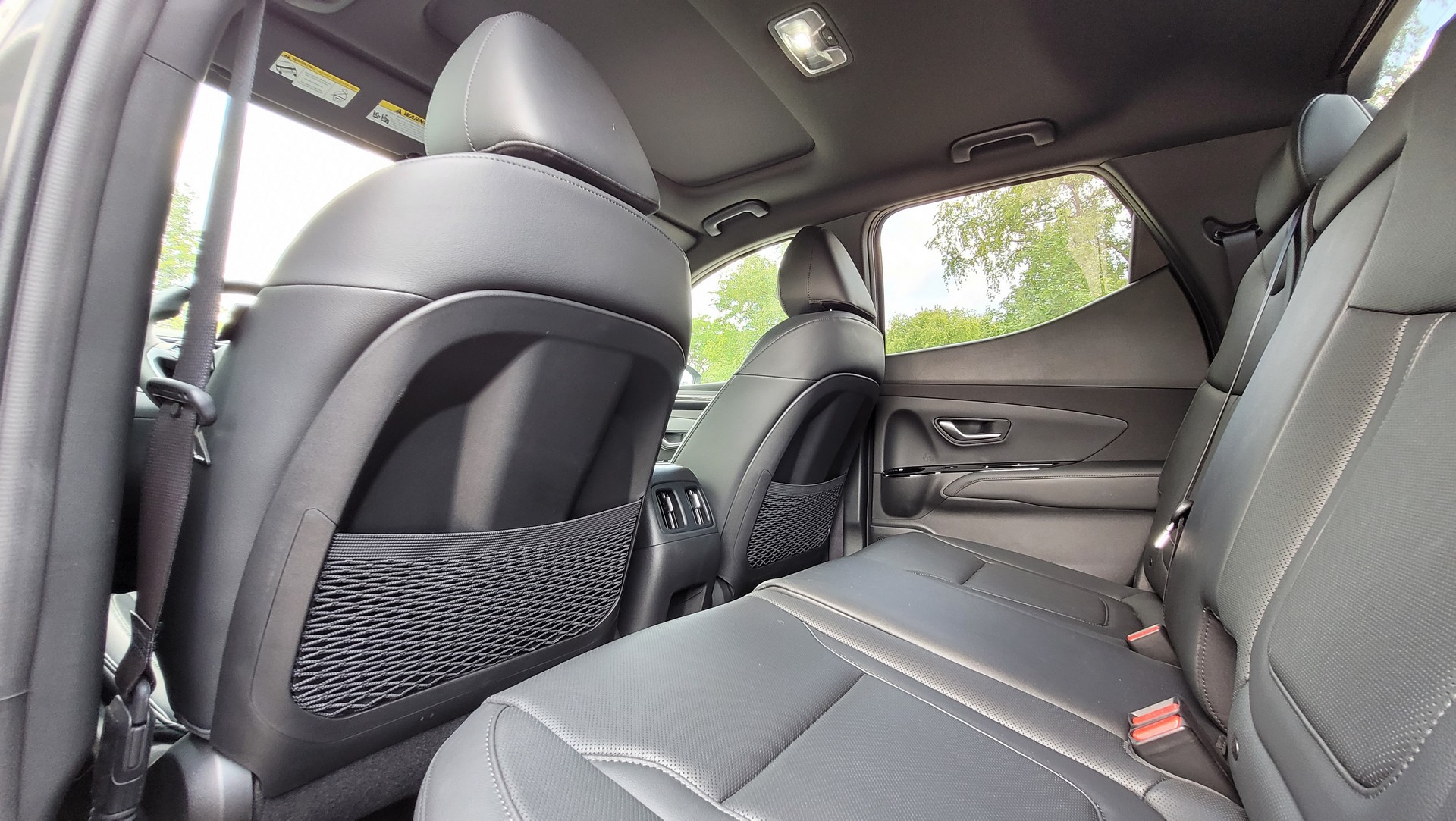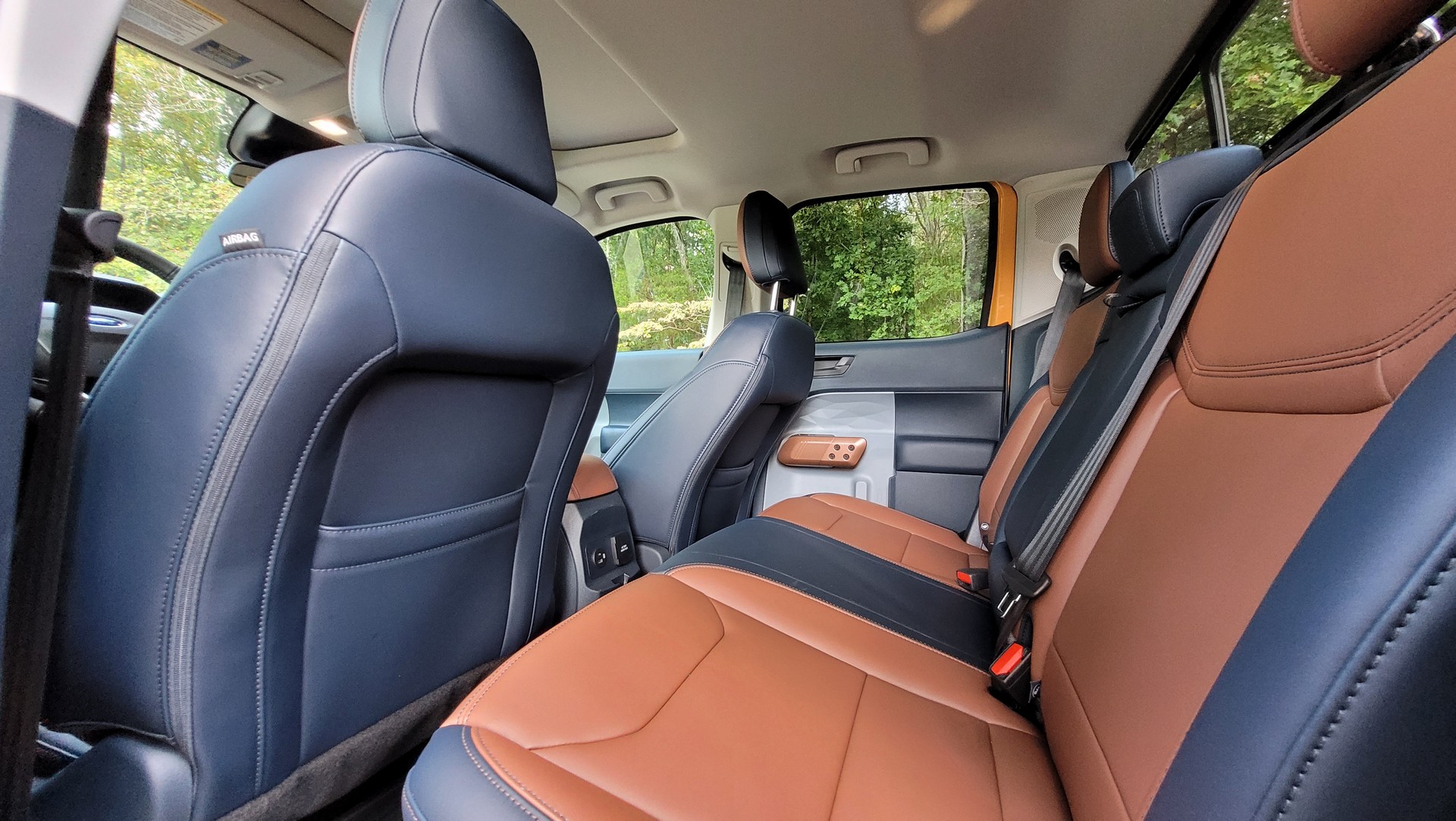Compact pickups are back as the Hyundai Santa Cruz is the fastest-selling vehicle in America and the Ford Maverick will arrive at dealerships later this year.
Now that we’ve driven both, let’s look at how the trucks stack up against one another. However, we’ll caution this isn’t a back-to-back comparison but rather a collection of initial thoughts.
Since styling is subjective, we’ll gloss over that and start with the bed. While both models have a roughly 4.5 foot (1,372 mm) bed, the Maverick’s is larger and more accommodating.
Driven: The 2022 Ford Maverick Is Proof Big Things Come In Small Packages
However, I prefer the bed in the Santa Cruz as it features composite construction and an underfloor storage area with drain plugs. The Hyundai also offers up to three LED lights and an integrated tonneau cover, which features high quality construction as well as a flush appearance.
Since the Santa Cruz has a base price that is nearly $4,000 higher than the Maverick, it comes as little surprise it has a nicer cabin. That’s especially true in the range-topping Limited trim, which features a 10.25-inch digital instrument cluster, a 10.25-inch infotainment system, heated / ventilated leather front seats and a heated steering wheel. The model also boasts Highway Driving Assist, which is an excellent companion on long distance trips.
That being said, the Maverick features a colorful and stylish cabin. While it’s far less luxurious, the range-topping Maverick Lariat starts at a reasonable $25,490 and comes equipped with a leather-wrapped steering wheel, an 8-way power driver’s seat and a 6.5-inch multi-information display. Buyers will also find an 8-inch infotainment system, a dual-zone automatic climate control system, ambient lighting and a passive entry system with a push-button ignition. The model can also be equipped with options such as a heated steering wheel, heated front seats, and adaptive cruise control with stop and go.
Despite their relatively compact dimensions, both models have an accommodating interior that can comfortably seat four adults. The Maverick offers up to 36.9 inches (937 mm) of rear seat legroom, which is slightly more than the Santa Cruz’s 36.5 inches (927 mm).
Under the hood, Ford has a huge advantage thanks to the Maverick’s hybridized 2.5-liter four-cylinder engine. It produces 191 hp (140 kW / 194 PS), just like the Santa Cruz’s naturally aspirated 2.5-liter engine, and returned a remarkable 49 mpg in real-world testing.
While the hybrid engine hasn’t been given an EPA rating yet, it will undoubtedly beat the Santa Cruz which returns 21 mpg city, 26 mpg highway and 23 mpg combined with front-wheel drive. However, it’s worth noting the Santa Cruz’s base engine is available with all-wheel drive while the Maverick requires you to upgrade to the 2.0-liter EcoBoost four-cylinder to get all-weather traction.
The turbocharged 2.5-liter four-cylinder in the Santa Cruz reigns supreme as it produces 281 hp (210 kW / 285 PS) and 311 lb-ft (422 Nm) of torque. That gives it a clear advantage over the EcoBoost’s output of 250 hp (184 kW / 253 PS) and 277 lb-ft (376 Nm) of torque. While the Maverick is lighter, the Santa Cruz also has a higher towing capacity of 5,000 lbs (2,268 kg).
The driving experience is a bit of a mixed bag as both models have their advantages and a back-to-back comparison is needed to properly judge them. Putting that caveat aside, the Maverick seems slightly more comfortable while the Santa Cruz is more engaging thanks to its better steering. That being said, both models are perfectly capable and feel more like crossovers than pickups.
Regardless of which truck you prefer, there’s no loser as both are impressive and relatively affordable. It’s also nice to have options and that’s especially true in a segment that has been non-existent in America for years.




